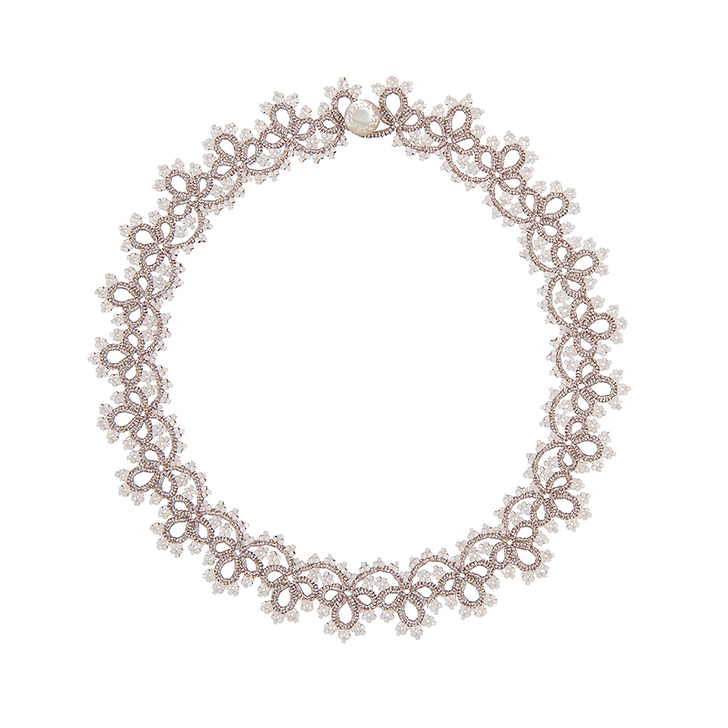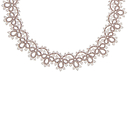Frivolity Necklace
BZ400166
Frivolity originated in Europe under the name "knotting". The origin seems to be proven in the 16th century but is undetermined from a geographical point of view. In the 18th century, frivolity was an art appreciated by the aristocracy, and it was part of the education of well-born girls.
It is a lace...
Read more
Frivolity originated in Europe under the name "knotting". The origin seems to be proven in the 16th century but is undetermined from a geographical point of view. In the 18th century, frivolity was an art appreciated by the aristocracy, and it was part of the education of well-born girls.
It is a lace technique, traditionally performed with one or two shuttles; they hold the cotton or silk thread, allow it to unroll, and prevent it from spinning. The works are made up of a series of knots, arranged in such a way as to form a pattern. The knots are made in two parts, and are sometimes separated by "picots", which make the works more attractive.
This art has not been lost: Lorina Balteanu discovered it in 2006, and had the idea of incorporating glass beads and fine stones, transforming lace into a refined and elegant jewel.
Close
Login to see prices
Sold by GrandPalaisRmn





